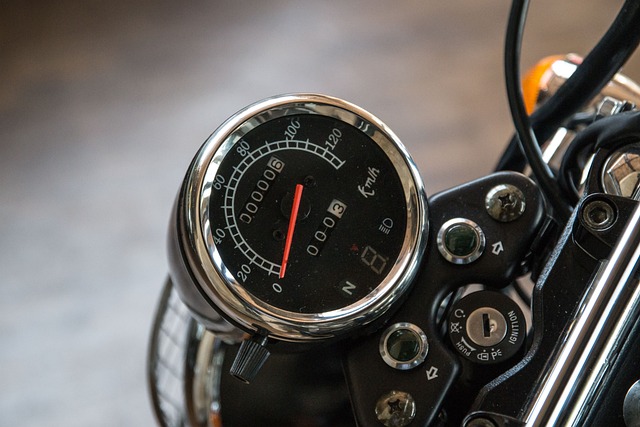Trading in a motorcycle can be a daunting task, especially if you don’t know what you’re doing. But with the right knowledge and preparation, it can be as easy as pie.
Knowing your bike’s value, gathering paperwork, and negotiating the price are all essential components to trading in a motorcycle.
In this article, we’ll walk you through each of these steps so that by the end of it you’ll have a better understanding of how to trade in your ride.
So grab your helmet and let’s get started – it’s time to take the bull by the horns!
Key Takeaways
- Research the value of your motorcycle before trading it in
- Clean and inspect the bike thoroughly to maximize its value
- Gather all necessary paperwork and make copies before trading it in
- Consider both local dealerships and online options for trading in your motorcycle
Research Your Bike’s Value
Knowing your bike’s worth before trading it in could save you a bundle – don’t miss out!
Determining the value of your motorcycle is essential for successful trading. Start by researching current market trends to get an idea of how much similar bikes are selling for, then adjust this price according to the condition of your bike.
Check online listings and dealerships to compare prices, and be sure to factor in any modifications or special features that increase its value. You can also look up used motorcycle values from sites like Kelley Blue Book or NADA Guides for more accurate pricing information.
Once you have a good understanding of the market value, you’ll be able to make an informed decision when negotiating with buyers or dealers.
Clean and Inspect Your Bike
Before you even think about selling your bike, it’s important to clean and inspect it thoroughly. In fact, 81% of motorcycle buyers consider the exterior condition of a used bike to be the most important factor when making their purchase!
Start by selecting parts like brakes, tires, and other components that need attention. Evaluate the overall condition of the frame and any paint or bodywork for signs of wear. Make sure all fluids are topped off and check that all lights and signals are working correctly.
Pay special attention to details like scratches or dents which can significantly reduce its value. Take some time to go over every little detail before listing your bike for sale – this will help attract more potential buyers.
Gather Your Paperwork
Gathering your paperwork is an essential step in selling your bike; it’ll demonstrate its authenticity and can bolster its perceived value.
To make sure you’re prepared to sell, you should:
- Review documents such as the title, registration, and service records.
- Check requirements for transferring the title in your state.
- Include any receipts or aftermarket accessories that came with the bike.
- Make a copy of all documents before handing them over to the buyer.
This extra effort will ensure that you’re well informed when it comes time to complete a sale and help protect both parties from potential disputes.
Taking a few moments now to review important documents can save significant headaches later on.
Consider Your Trade-in Options
Are you considering trading in your motorcycle? There are two primary options available to you: trading-in at a local dealership or trading-in online.
If you choose to trade-in with a local dealership, you can expect a more personal and hands-on experience. On the other hand, if you choose to trade-in online, the process might be quicker, but it may not be as interactive.
Trade-in at a Local Dealership
Heading to a local dealership to trade in your motorcycle? Well, why not take today’s hassle-free approach and get the job done quick! Before you head out, make sure to do some price comparisons first. That way, you’ll have an idea of what the market rate for similar models is.
When you arrive at the dealership, they’ll likely give you an offer right away. However, it never hurts to test drive a few other models before making your decision. Doing so will help ensure that you’re getting the best possible deal on your trade-in:
- Price Comparisons:
- Research current market rates for similar models.
- Look into dealerships offers online ahead of time.
- Test Drives:
- Take a few cars for a spin before deciding on one.
- Ask about any additional features or incentives they can provide with each model.
Trade-in Online
| Trading in your ride doesn’t have to be a hassle – go online and get it done fast! Consumers’ experiences with trading in their motorcycle online have been positive overall. It’s safe, secure and you don’t even need to leave the comfort of your home. Plus, there are a variety of options available for consumers when shopping around. | Pros | Cons |
|---|---|---|
| Secure transactions | Shipping costs | |
| Variety of options | Lack of physical interaction | |
| Convenience | Uncertainty over condition of trade-in vehicle |
Negotiate the Price
When it comes to negotiating the price for your motorcycle, don’t be afraid to take a stand and speak up; don’t let the seller push you around!
Make sure you come prepared with pricing strategies and tactics that have worked in the past. Research current market prices for similar models so you know what to expect.
When making an offer, start low but be willing to compromise and move closer towards the asking price if necessary. If you’re able to show proof of recent repairs or maintenance, make sure to use that as leverage when trying to get a better deal.
Don’t forget, most sellers are open to negotiation so use this opportunity to your advantage. Be confident in your abilities and stay firm on what you believe is fair.
Get an Appraisal
Before you start negotiating for your motorcycle, it’s important to get an appraisal to understand the true value of what you’re buying. Comparing appraisals from different sources helps ensure a fair price.
Look for reputable appraisers who specialize in motorcycles and have experience with the make and model of your choice. Seek out an independent third-party to assess the condition of the bike objectively.
Have all documents related to ownership and maintenance ready when bringing it in for appraisal.
At the end of the process, you’ll have a good understanding of how much your motorcycle is worth, allowing you to confidently negotiate a fair price.
Finalize the Sale
Once you’ve agreed on a price, it’s time to finalize the sale. Make sure to get a Certificate of Authenticity from the seller that verifies the motorcycle’s make, model, and year.
Ask for a test ride so you can check for any issues with the bike. You should also have the seller fill out all necessary paperwork and sign off on the bill of sale.
Finally, make sure you understand all state laws when it comes to registering and insuring your new motorcycle so you don’t run into any problems down the line.
Once everything is in order, pay up and hit the open road!
Frequently Asked Questions
How can I get a good price for my motorcycle?
To get the best price for your motorcycle, be sure to do a pre-inspection and let potential buyers test drive it. Show that it’s in good condition and you have knowledge of its upkeep. Be honest and detailed about its features.
What paperwork do I need to trade in a motorcycle?
Drawing a comparison between trading in your motorcycle and selling it yourself, you’ll need to evaluate its value, research dealers and be sure to have the proper paperwork for the transaction. Gathering this documentation will ensure a smooth and successful trade-in.
What should I look for in a used motorcycle?
When looking for a used motorcycle, make sure to check the routine maintenance and any safety checks that have been done. Pay attention to the condition of tires, brakes, headlights, and other components. Have a trusted mechanic inspect it if possible.
What is the best way to negotiate a trade-in price?
Do your market research and value your trade-in accordingly. Negotiate the price based on its condition, mileage, and features. Have a realistic expectation of what you’re likely to get for it.
Are there any tax implications when trading in a motorcycle?
You may not have considered it, but trading in a motorcycle comes with tax implications. When transferring paperwork, make sure to keep track of fuel efficiency for any potential deductions. Irony aside, don’t forget that taxes are an important part of the process!
Conclusion
You’ve done the hard work and now you’re ready to wrap up your trade-in. Make sure you get all the paperwork taken care of, including an appraisal if necessary.
Negotiate the best price for both parties so that everyone walks away happy. And remember: time is money, so don’t let yourself get caught up in a lengthy negotiation process; it’s not worth it in the long run.
With these tips in mind, you’ll be able to trade in your motorcycle like a pro! After all, knowledge is power – and when it comes to trading in motorcycles, that couldn’t be more true.



